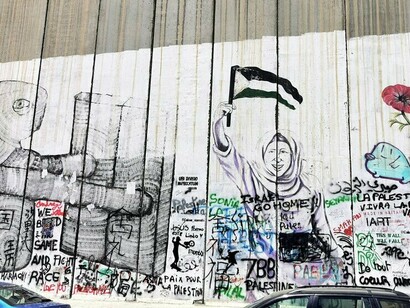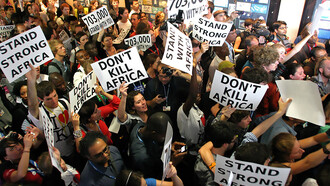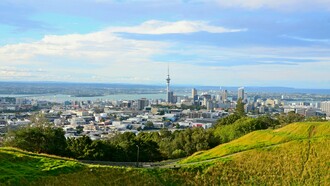Every day, Palestinian youth harness the power of social media to share the realities of life under occupation, conflict, and war. Through platforms like Instagram, TikTok, and X, young activists document human rights violations, challenge dominant narratives, and mobilize international support. Campaigns such as #GazaUnderAttack and #AllEyesOnRafah have captured global attention, sparking protests and influencing international discussions. Yet, beyond the screens, these digital efforts carry deep significance, representing a vital form of resistance, a fight for visibility, and a call for the world to act.
Digital diplomacy can be defined as the use of digital tools and platforms to conduct diplomatic activities, transforming how non-state actors engage with international issues. For youth-led movements, social media provides accessible and cost-effective channels to bypass traditional diplomatic barriers, reach global audiences, and advocate for change. Digital platforms empower young people to rapidly mobilize, build transnational networks, and create innovative campaigns that elevate their voices on the world stage.
In the case of Palestine, these digital tools have become crucial for youth activism. Young Palestinians use social media to document everyday realities, from destruction and displacement to peaceful resistance. Through photos, videos, and live streams, they challenge dominant narratives and seek to raise global awareness of their experiences. Hashtags like #IsraelGazaWar and #HelpGaza have gained widespread traction, drawing attention not only from individuals around the world but also from international media and organizations.
This digital activism has sparked a surge in pro-Palestinian solidarity movements globally. University students in the United States, Europe, and beyond have organized demonstrations and awareness campaigns, fuelled by information shared by Palestinian youth online.
The amplification of these voices has pressured international bodies such as the United Nations and the International Criminal Court (ICC) to investigate alleged violations. Arrest warrants issued for high-profile Israeli officials and parliamentary debates over arms sales are tangible examples of how youth-led digital diplomacy can influence policy discussions at the highest levels. To add, multiple countries have recognized or promised recognition of Palestine as a state. So far the count is 147 out of 193 countries in the United Nations already recognize a Palestinian state.
But these efforts do not come without challenges. Palestinian youth are facing increasing levels of censorship and content removal on major platforms. Posts documenting violence or sharing footage from the ground are often flagged or taken down under vague content moderation policies. Several activists have reported account suspensions or shadow-banning, a practice where posts are suppressed without notification, significantly limiting visibility. The result is a digital space that feels uncertain and, at times, unsafe for those trying to raise awareness.
Beyond censorship, many also face online harassment and psychological stress from constantly engaging with traumatic content. Activists, journalists, and ordinary users have spoken about the emotional toll of bearing witness and telling their stories, often without institutional support or protection. In many cases, the phone is their only tool and their only shield.
Despite this, youth in Palestine continue to find ways to adapt and resist. The use of encrypted apps, international media partnerships, and coordinated hashtag campaigns has allowed for greater protection and broader reach. Immigrant communities and allies have played a critical role in amplifying their messages, translating content, and ensuring that stories are not lost in the algorithm. These alliances have become crucial for standing for the cause and countering the digital silencing many youth face.
One of the examples of this cross-border impact has been the mobilization of students and protests across American and European universities. Sparked by footage shared from Gaza and the West Bank, students have demanded their institutions cut ties with companies or governments complicit in the conflict. In some cases, university leadership has responded with disciplinary action, provoking a debate about free expression and the role of global solidarity in academia. Still, the persistence of these youth-led movements reflects the growing power of digital resistance.
More than just tools for documentation, social media platforms have become lifelines. They connect those in Palestine with the outside world, building empathy and pressure simultaneously. For many international observers, the digital content shared by youth has shaped a more nuanced understanding of the conflict, one grounded in lived experience, not distant policy.
It is also important to recognize that digital diplomacy is not a replacement for formal political action but an essential addition to it. In the absence of traditional representation on the global stage, young Palestinians have carved out their own form of informal diplomacy, one that does not rely on embassies or official delegations but on voice, urgency, and truth.
The digital resistance led by Palestinian youth is a reminder that visibility is power. But visibility must lead to action. Sharing a post, liking a video, or adding a hashtag is not enough. As their stories reach millions around the globe, the responsibility shifts to the international community, to human rights institutions, governments, media, and individuals to listen, to question, and to act.
Palestinian youth have done their part, often at great personal risk. Their efforts have turned platforms once used for entertainment into battlegrounds for justice. The least the world can do is pay attention and refuse to look away.
In a conflict fought on many fronts, Palestinian youth continue their resistance with WiFi and unwavering determination. Their digital diplomacy is a reminder that in today’s interconnected world, activism can transcend borders, but it requires global solidarity and concrete commitments to bring about change.














